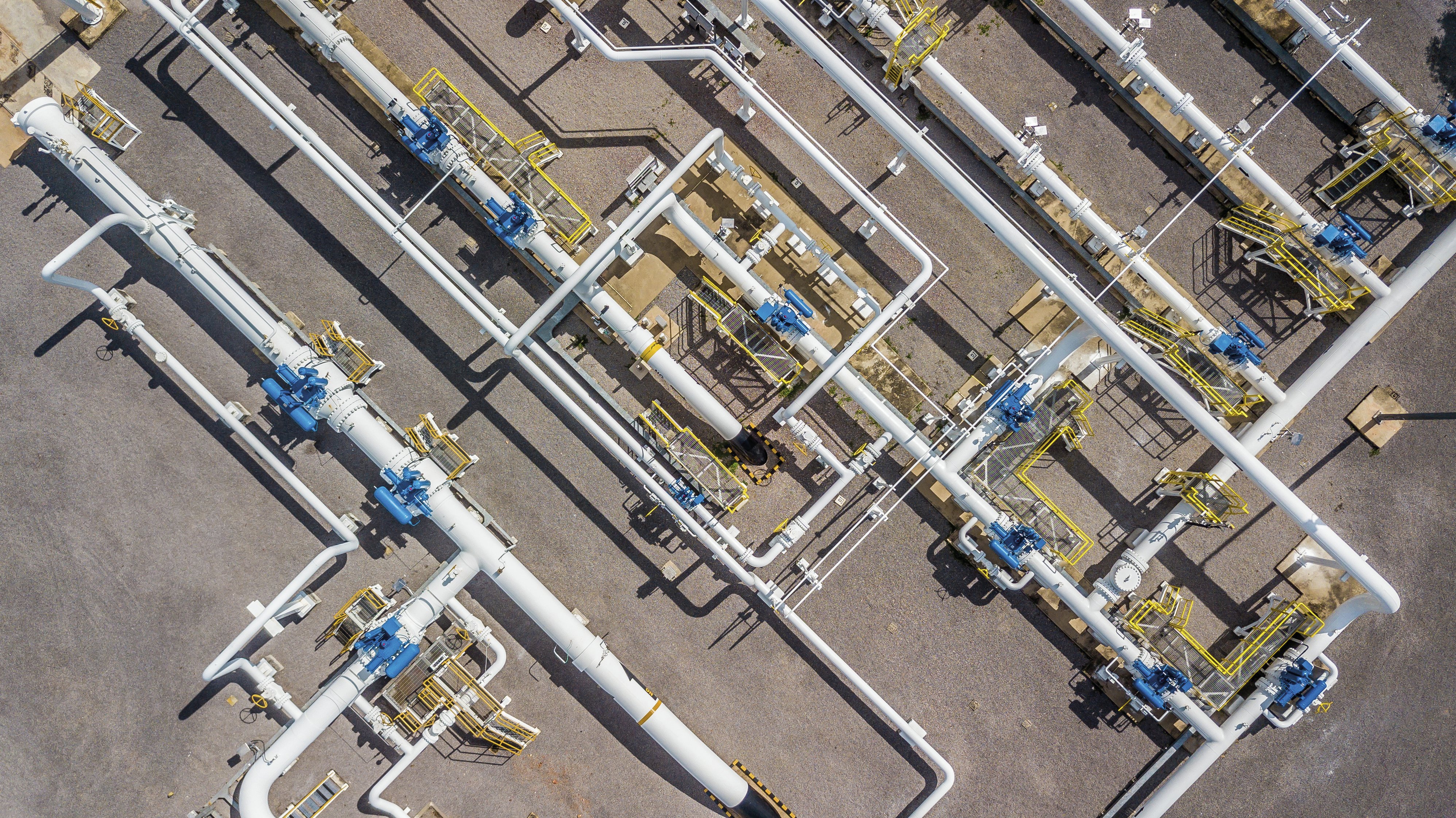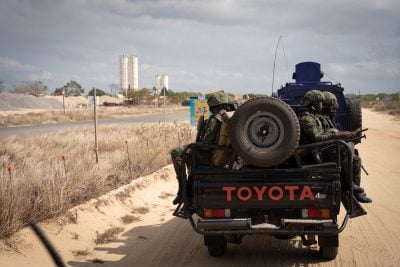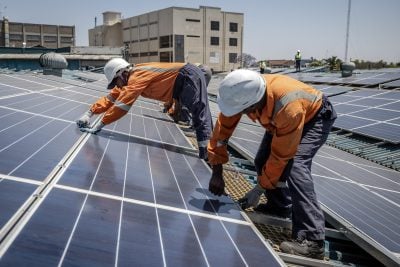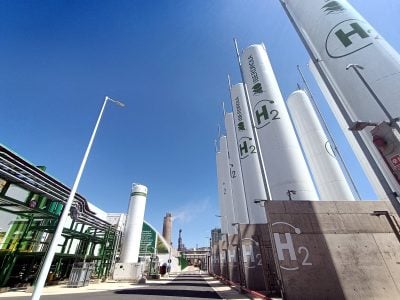The announcement of a new African Energy Transition Bank in mid-May has highlighted the problems facing energy financing on the continent.
The bank’s two backers, the African Export-Import Bank (Afreximbank) and the African Petroleum Producers Organisation (APPO) said they had been forced to establish the new institution because of “the co-ordinated withdrawal of international trade and project financing” for Africa’s oil and gas industry.
The director of client relations at Afreximbank, Rene Awambeng, told the signing ceremony in Luanda, that “It will be an African-led solution to address the threat posed to the African oil and gas industry from the shortages of funding.”
Ownership of the new bank will lie with the 15 member countries of APPO, while management will be the responsibility of Afreximbank.
Have traditional investors abandoned Africa?
The significance of the announcement lies less in the arrival of a new lender, which may take some time to create, than in the recognition that financing hydrocarbon development in African countries is becoming increasingly difficult.
As Dr Omar Farouk Ibrahim, APPO secretary-general, commented, “How else do Africans expect to harvest the 125 billion barrels of crude and over 500 trillion SCUF of gas when the traditional financiers have decided to abandon the continent?”
But is it actually true that traditional financiers have abandoned the continent? With Europe trying to wean itself off Russian gas, following the invasion of Ukraine, the prospects for gas exports from African producers look brighter than they have for some time.
Recent research from Rystad Energy suggests African production is likely to increase from about 260bn cubic meters (bcm) in 2022 to as much as 335 bcm by the end of this decade and then to 470 bcm by the late 2030s, “equivalent to about 75% of the expected amount of gas produced by Russia in 2022”.
According to Siva Prasad, senior analyst at Rystad Energy, “Existing pipeline infrastructure from Northern Africa to Europe and historical LNG supply relationships make Africa a strong alternative for European markets, post the ban on Russian imports.”
Europe’s need to diversify suppliers changes the game
To date, the largest African exporters of LNG have been Nigeria and Algeria, followed by Egypt, Angola, and Equatorial Guinea. Recent discoveries may now bring Mozambique, Tanzania, Senegal, Mauritania, and South Africa into the game.
Late last year, before the Russian invasion, the outlook for these fields might have been marginal, given the global policy move to cut carbon emissions. Europe’s push to diversify supplies has changed that calculus completely.
Nonetheless, it is accurate to say that an increasing number of investors are moving out of hydrocarbon development. That does not, however, mean they are turning their backs on Africa. Rather, they are agnostic about where they seek new opportunities. This could be a boon for Africa or, alternatively, the continent could miss the boat.
In November 2021, on the side-lines of the Cop26 climate summit, the Glasgow Financial Alliance for Net Zero (GFANZ) declared that its 450 member companies, spread across 45 countries, had an investment pool worth $130 trillion available to finance moves towards net zero carbon emissions over the next three decades.
Those firms included banks, insurers, pension funds, asset managers and export credit agencies.
The question facing investment managers at these GFANZ firms is where they will find enough viable “net zero” projects with sufficiently good rates of return.
Lack of finance is not the problem
The question for energy projects in Africa must be whether they can attract this investment, given the competition from Asia and elsewhere. This avalanche of potential cash will face the same problems as those already facing the industry.
As one executive from a renewable energy firm notes: “I don’t see any lack of finance at all. The problem is the other way round – the lack of well-structured projects. The question is why aren’t there more projects coming online? We’re way behind in Africa, the strategy isn’t working.”
Regulatory reform is key
So, what would it take for big institutional investors and pension funds to take a serious look at the African energy sector? Mark Carrato, coordinator of the USAID Power Africa initiative, believes the answer lies in making African countries’ regulatory frameworks more investor friendly.
Interviewed at the Africa Energy Forum in November 2021 he laid out his wish-list for change.
“You need clear and transparent procurement processes, sound strategic and integrated power sector planning, transparent legal and regulatory frameworks and international power pools”, he said.
This approach to developing domestic energy markets has not yet been widely adopted despite empirical evidence of its benefits.
It has, however, borne fruit in some contexts. The deregulation of the electricity markets in Nigeria, Senegal and Mozambique has created space for private companies such as Azura to build independent power plants (IPPs).
So far, Azura has constructed 884 MW of gas-fired generating capacity in those three countries, with a further 1232 MW under development. Azura has been backed by range of investors including two private equity funds, Amaya Capital and Actis, along with the African Development Bank’s project financing arm, Africa50.
Political backlash holds back investments
Azura’s investment became controversial in Nigeria when politicians publicised the nature of the terms that underpinned it.
These were, by all accounts, standard Take or Pay clauses – obligating the buyer to either buy and take delivery of a minimum quantity or to pay the seller for any shortfall – and not particularly controversial by industry standards. Nonetheless, the media and political backlash that ensued may hold back future IPP investments in Nigeria.
One unintended consequence of such controversies may be that energy companies redirect their attention from domestic gas-to-power projects in Nigeria in favour of export-based projects where the producer is not tied to a single customer and the political risk is lower and more easily mitigated.
Investment in gas-based projects, whether for domestic use or for export, is becoming increasingly controversial as voters, governments and key investors demand moves towards low-carbon energy.
Gas is not, however, destined to become a stranded asset, provided that projects are done well.
In the words of one senior energy investment executive, “There is a very clear route for those projects. It is enhanced scrutiny and focus on the minutiae. There are some European development finance institutions that are not open to gas at all. But I hope that the pendulum is swinging back, that gas has a role in our green future.”
Mozambique’s Temane demonstrates problems for gas sector
The 450 MW gas-fired power plant at Temane in Mozambique has become emblematic of the problems facing the gas sector.
The investment was only pushed through with the backing of foreign governments, willing to brave considerable criticism from climate campaigners. They argued that the Temane investment was vital to bridge Mozambique’s energy gap before large-scale renewables come on stream.
The UK and Norwegian governments, through their Globeleq joint venture, secured $650m in debt funding for the project from the IFC (part of the World Bank group), the Dutch Development Bank FMO, the Emerging Africa Infrastructure Fund (part of Private Infrastructure Development Group, a multi-donor organisation), the US Government, OPEC and the World Bank’s Multilateral Investment Guarantee Agency.
Such schemes are likely to become increasingly rare, however. The IFC, the UK and Globeleq have a policy of not investing in upstream oil and gas, for example.
Four main investment sources for African energy
The pressure for moves to restrict funding for hydrocarbon-based projects mean there are now, broadly, four types of investment source for African energy.
There is a legacy group of investment funds still able to see commercial returns from investments in hydrocarbons. There are also funds backed by African governments willing to invest in hydrocarbons as keystones of national development strategies.
The new African Energy Transition Bank is one example of these, as is the AfDB’s Africa50 financing arm. But even these funds have been slow to roll out investments. Africa50 has just six power projects in its portfolio, for example.
When it comes to low carbon power generation, the vast majority of funding on offer is coming from various forms of concessional lending, whether from OECD governments, philanthropic funds or climate offset investments.
What the renewable energy sector in Africa requires is a large expansion of the fourth group: institutional investors seeking commercial investments. That is what appears to be missing from the current funding mix.
As the energy investment executive noted, “There is a lot of interest in renewable energy projects from the financial side but having interest and reaching financial close are different things. The finance community has to do better. Once you have a first RE project, achieving that risk allocation is when the risk should reduce and at that point everyone has to come together and find efficiencies.”
There is no shortage of local need for investment in Africa’s energy sectors. According to the PWC Africa Energy Review 2021, economists estimate the cost of attaining a continent-wide net-zero energy mix by 2050 to be $2.8 trillion.
The figure is based upon annual costs of around $33bn this decade, around double the level of actual investment in 2019. From 2030 the estimated need will increase dramatically, to $111bn annually between 2030 and 2040 and then to $142bn annually between 2040 and 2050.
South Africa attracts investors
One country where commercial investors have successfully entered the market is South Africa, which is already the continent’s largest electricity generator. With a developed infrastructure and an investor-friendly regulatory framework already in place, it has not been hard to find funds willing to take a risk on renewable energy solutions.
One such player is Revego whose “yieldco” business model is based on long-term power-purchase agreements for windfarms and solar farms. Its CEO, Reyburn Hendricks, expects a dividend yield of 8-10% for the medium term. He sees this model as predominantly South Africa focused “because that’s where most of the opportunities are”.
With the main South African generator Eskom mired in operational and financial difficulties, there are big opportunities for private providers to fill the country’s developing energy gaps.
Botswana and Namibia turn to solar
Those problems are also spurring two of South Africa’s neighbours to reduce their dependence on Eskom. Botswana and Namibia are in the middle of new tendering processes for large scale solar investments.
At the end of 2020, Botswana had just 6 MW of installed photovoltaic power, yet it is now part of the biggest solar power project in sub-Saharan Africa. With the backing of USAID, Botswana and neighbouring Namibia are attempting to construct between 2 and 5 GW of solar output.
To do so, they are ending the monopolies previously enjoyed by their national power companies and going out to private power companies. The first to receive a contract in Botswana was the locally-listed Shumba Energy, previously a coal mining enterprise.
The economics of the model rely on connecting this huge uptick in capacity to the transnational Southern African Power Pool (SAPP).
There are considerable obstacles, as Mark Carrato of USAID’s Power Africa initiative, notes. “If you can easily point to one bottleneck that has been holding back the sector, transmission is it. It’s expensive, it’s hard to do and it’s rarely linked in a really sound way to some of the generation projects. There are stranded assets all over Sub-Saharan Africa and we lose a ton of energy each year.”
Grid investment is a huge opportunity
For Carrato, the need for grid investment is a huge opportunity for outside investors.
“We need to find new ways of financing them” he said at last November’s Africa Energy Forum. “They’re really expensive. In other parts of the world, you can get private capital to do that. Why would a government want to take that on?”
He acknowledged the sensitivities in some countries about involving the private sector but insisted that “Governments can still maintain their sovereignty and own their own system but let someone incentivised to get the job done.”
But according to one investor such objections are not entirely due to bureaucratic obstruction.
“There is an affordability issue whereby the government cannot just sign up to the iron-clad documents developers want.
“Developers need to be more creative in coming up with solutions and sometimes circumventing the government. There was an idea that after the first one the process would speed up, but the reality was that each process was as painful as the last.”
Meeting the investment challenge
For most external investors, some protection from these pains can be found in the involvement of government-backed lenders and multinational DFIs. They provide, in effect, a form of political risk insurance, a reassurance that the lender will not be standing alone if local conditions turn against their project.
For this reason, most African countries are unlikely to see purely commercial investments for some time to come. Only once viable and trustworthy frameworks for foreign investment have been established – and tested in real world disputes – will purely private money begin to flow. For the time being, the path ahead is public-private partnerships.
This will require a degree of agility and speed on the behalf of all the participants in the energy investment sector which has, historically, been rare. The necessary doubling, and then quadrupling, of investment in the overall African energy market over the next decade is going to challenge everyone.
Lenders will have to scale up their project assessment and management capacities and governments will need to speed up their decision-making. If they can do so, they will kick-start a virtuous circle. Successful projects will lead to more successful projects and lower costs as risks become known and manageable.
The alternative is that investors will see easier returns outside Africa and direct their money elsewhere.
Want to continue reading? Subscribe today.
You've read all your free articles for this month! Subscribe now to enjoy full access to our content.
Digital Monthly
£8.00 / month
Receive full unlimited access to our articles, opinions, podcasts and more.
Digital Yearly
£70.00 / year
Our best value offer - save £26 and gain access to all of our digital content for an entire year!
 Sign in with Google
Sign in with Google 



